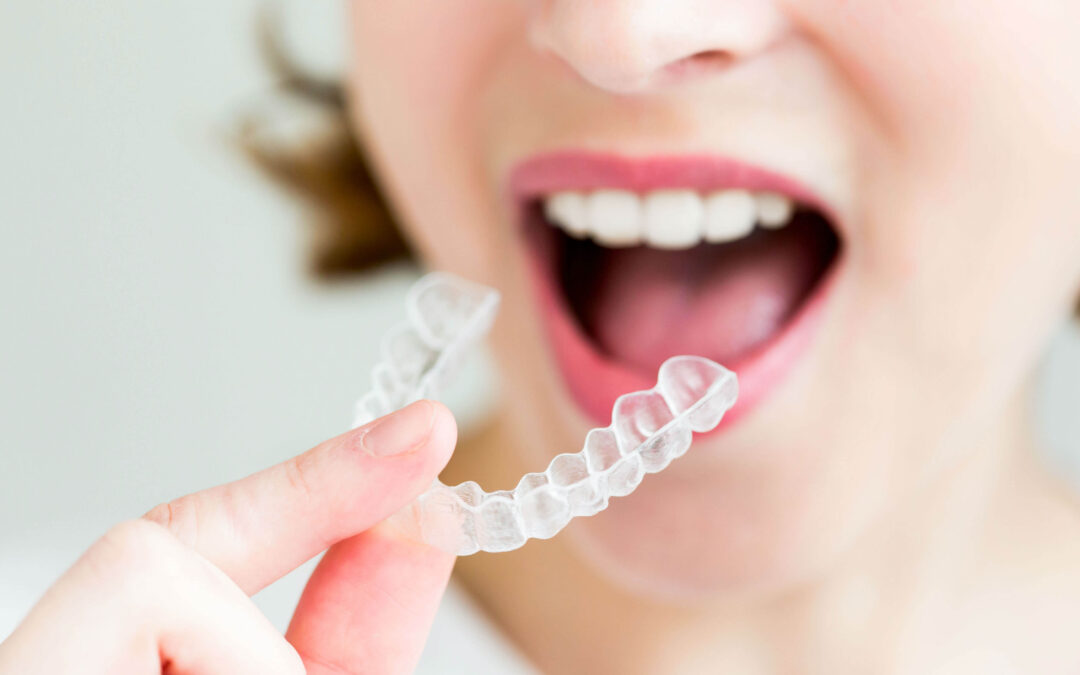What to Expect Every Step of the Way
Choosing to improve your smile is an exciting decision, and Invisalign makes the journey comfortable, discreet, and effective. If you’re curious about how Invisalign works and what you can expect from start to finish, this guide is for you.
Invisalign is more than just a set of clear aligners—it’s a step-by-step transformation customized for your teeth and lifestyle. In this blog, we’ll walk you through each stage of the Invisalign process: before treatment begins, what happens during treatment, and how to maintain your results afterward.
Before Treatment: The Planning Phase
1. Your Initial Consultation
Your Invisalign journey begins with a visit to a dentist who offers Invisalign treatment. During this first appointment, your provider will evaluate your teeth, bite alignment, and overall oral health to determine if Invisalign is right for you.
If you’re a good candidate, your dentist will take digital scans or impressions of your teeth to begin crafting your personalized treatment plan.
2. Digital Smile Preview
Using 3D imaging technology, your dentist will create a digital model of your mouth and simulate how your teeth will move throughout the process. You’ll get to see a virtual preview of your future smile, often one of the most exciting moments of the consultation.
This stage ensures that every tooth movement is carefully planned before the first aligner is even created.
3. Receiving Your Aligners
Once your treatment plan is approved, your custom aligners will be created. Each set is designed to move your teeth gradually over time. You’ll typically receive multiple aligners at once, with instructions on when to switch to the next set (usually every 1 to 2 weeks).
During Treatment: The Active Phase
1. Wearing Your Aligners
You’ll wear your aligners for 20 to 22 hours per day, removing them only to eat, drink (anything other than water), brush, and floss. The aligners are designed to fit snugly and apply gentle pressure to shift your teeth according to your treatment plan.
At first, you may experience slight discomfort or tightness as your teeth begin to move—this is completely normal and usually subsides within a few days.
2. Adapting to Everyday Life
One of the biggest advantages of Invisalign is how well it integrates into your daily routine. There are no food restrictions, no emergency visits for broken wires, and minimal interference with speech after the initial adjustment period.
Since the aligners are removable, you can maintain your oral hygiene more easily than with traditional braces. Simply take out the trays to brush and floss as usual.
Helpful tip: Clean your aligners daily with a soft toothbrush or Invisalign cleaning crystals to prevent buildup and maintain clarity.
3. Progress Checkups
You’ll have regular check-ins with your dentist, usually every 6 to 8 weeks. These appointments are quick and ensure that your treatment is on track. Your dentist may make small adjustments or provide your next set of aligners.
The total duration of your Invisalign treatment can vary but typically lasts between 6 to 15 months, depending on the complexity of your case.
4. Tracking Your Results
As the weeks pass, you’ll start noticing real changes. Gaps close, crowding improves, and your bite becomes more balanced. Many patients report a confidence boost even halfway through treatment as their teeth start to align.
After Treatment: Maintaining Your Smile
1. Finishing Your Final Aligner Set
Congratulations! Once you’ve completed your final set of aligners, your teeth should now be in their ideal position. But your Invisalign journey isn’t over just yet—retention is key to keeping that beautiful new smile in place.
2. Wearing a Retainer
Your dentist will provide you with a custom retainer, often made of a similar clear material as your aligners. Retainers prevent your teeth from shifting back into their original positions. In the beginning, you’ll likely wear it full-time, then transition to nighttime wear as directed.
Think of it as long-term insurance for the smile you’ve worked hard to achieve.
3. Routine Dental Care
It’s important to continue your routine dental checkups and cleanings after Invisalign treatment. Your dentist will keep an eye on your bite and ensure that your smile remains healthy and stable for years to come.
Daily brushing, flossing, and retainer care are essential for maintaining your results.
FAQs About the Invisalign Journey
How do I know if I’m a good candidate for Invisalign?
Invisalign can treat a wide range of cases, from mild crowding to more complex bite issues. The best way to find out is to schedule a consultation with an experienced Invisalign provider.
Will Invisalign affect how I talk?
Some patients notice a slight lisp for the first few days of treatment, but it usually goes away as you get used to the aligners.
Can I eat or drink with the aligners in?
It’s recommended to remove your aligners when eating or drinking anything other than water to prevent staining or damage.
What happens if I lose one of my aligners?
Contact your dentist in Barrie right away. They may recommend going back to your previous aligner or moving forward to the next one, depending on how far along you were.
How long will I need to wear a retainer after treatment?
Most patients need to wear a retainer at night indefinitely to prevent shifting, though the exact timeline can vary by case.
Ready to Start Your Invisalign Journey?
Invisalign offers a smooth, comfortable, and confidence-boosting path to a straighter smile. From your initial consultation to life after aligners, knowing what to expect at each stage can help you make the most of your experience.
Barrie’s Clear Choice for Invisalign: Yonge Forest Dental
Considering Invisalign? If you’re located in or around Barrie, ON, the trusted team at Yonge Forest Dental is here to guide you through your Invisalign journey with care, precision, and a personalized approach.
Call us today at 249-888-2001 to schedule your Invisalign consultation and take the first step toward a straighter, healthier smile.


